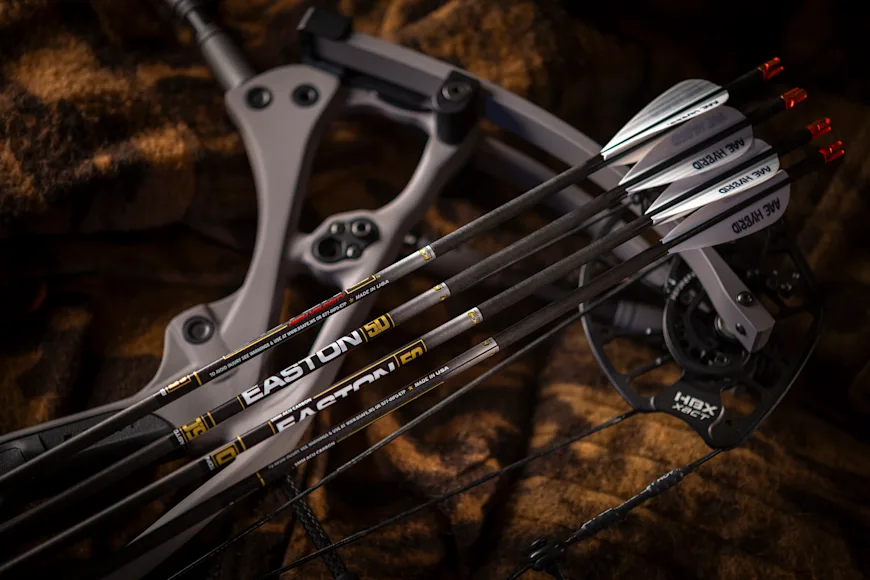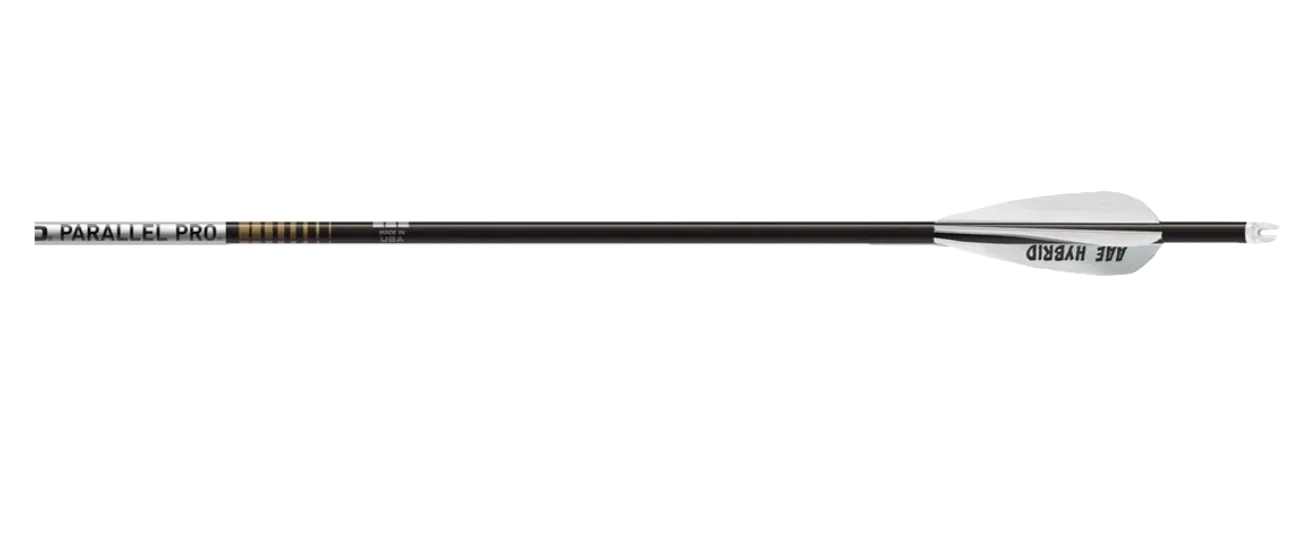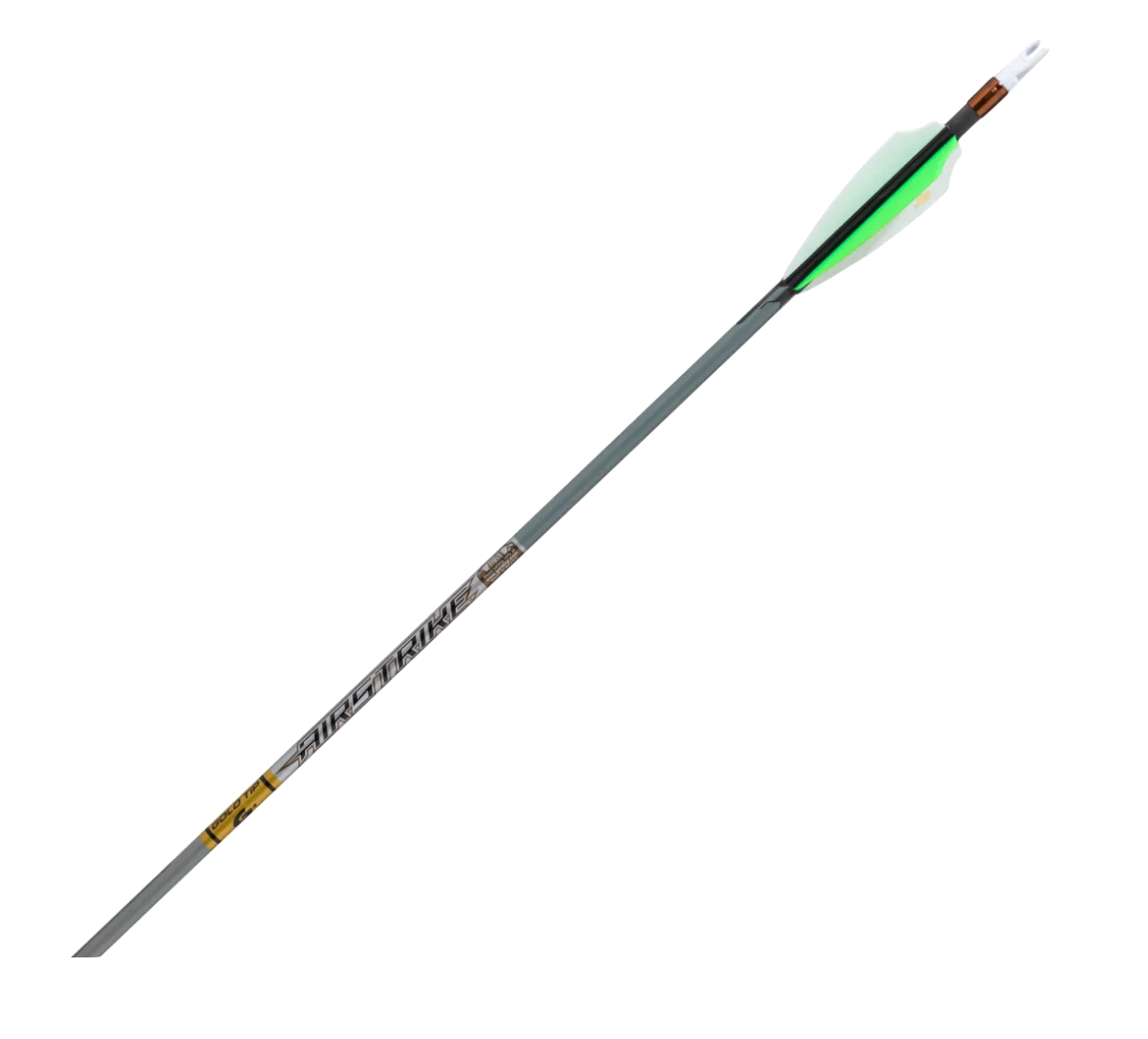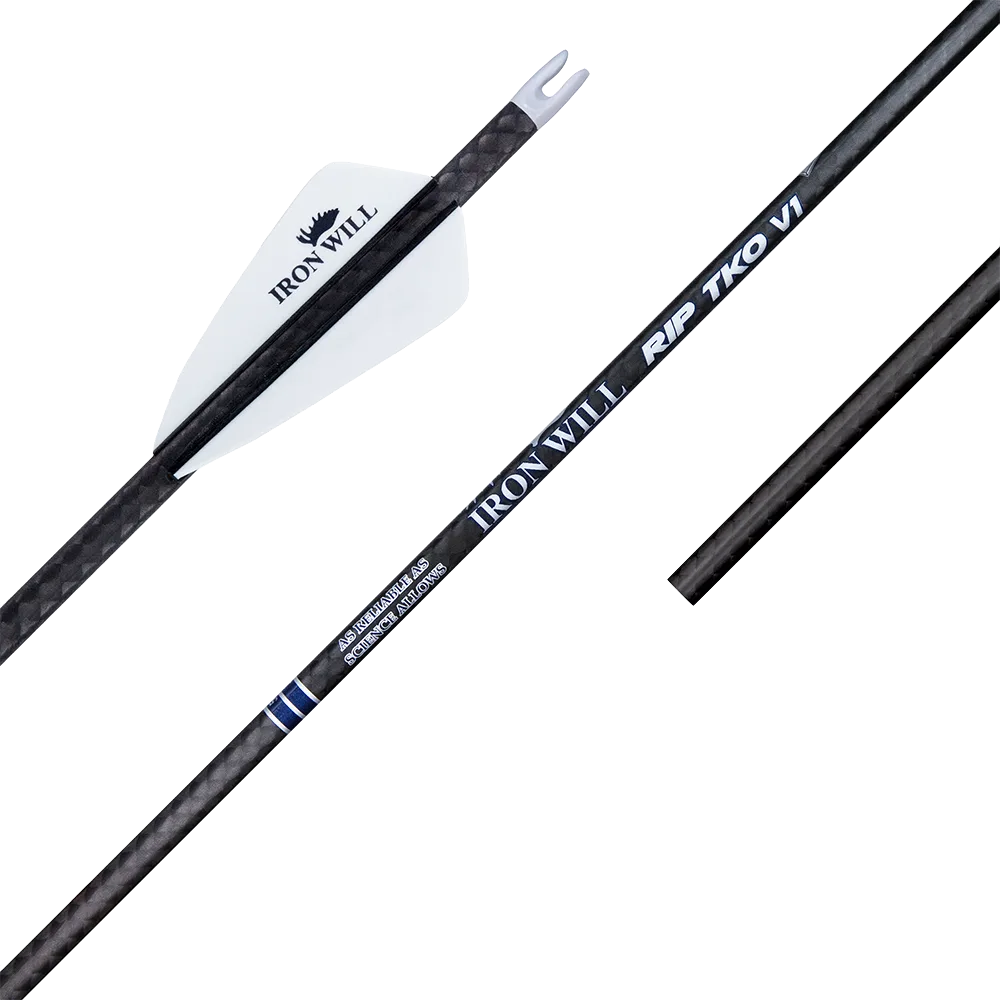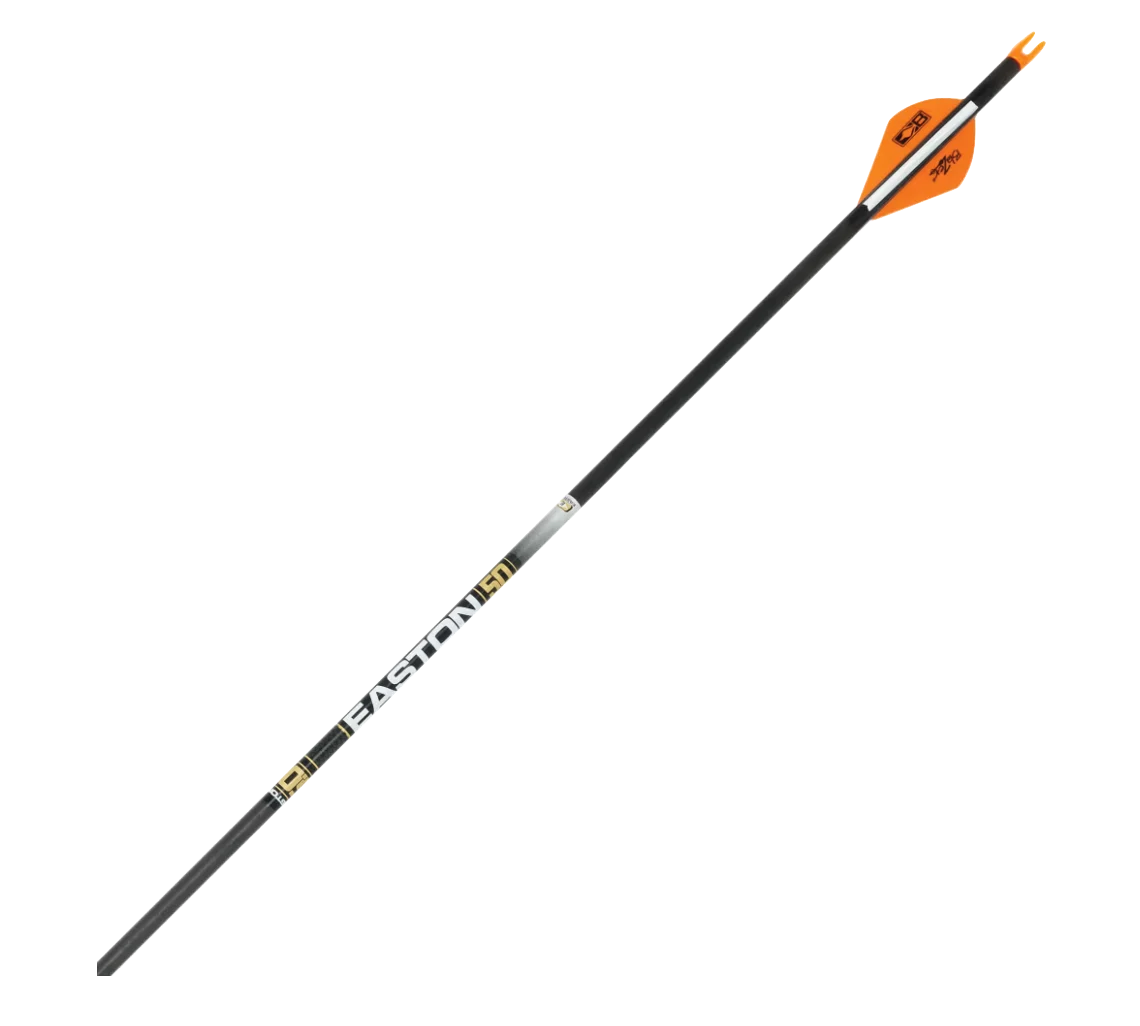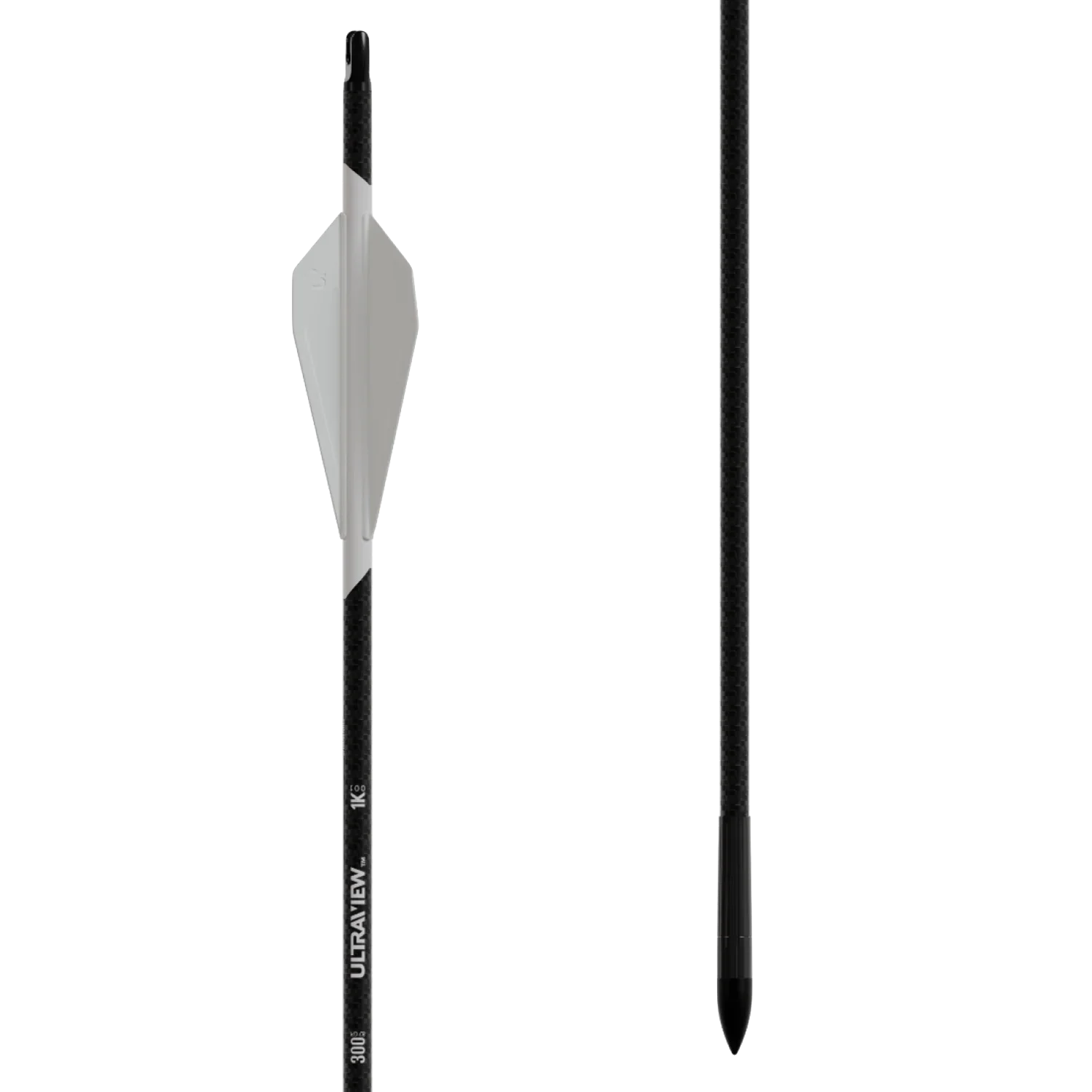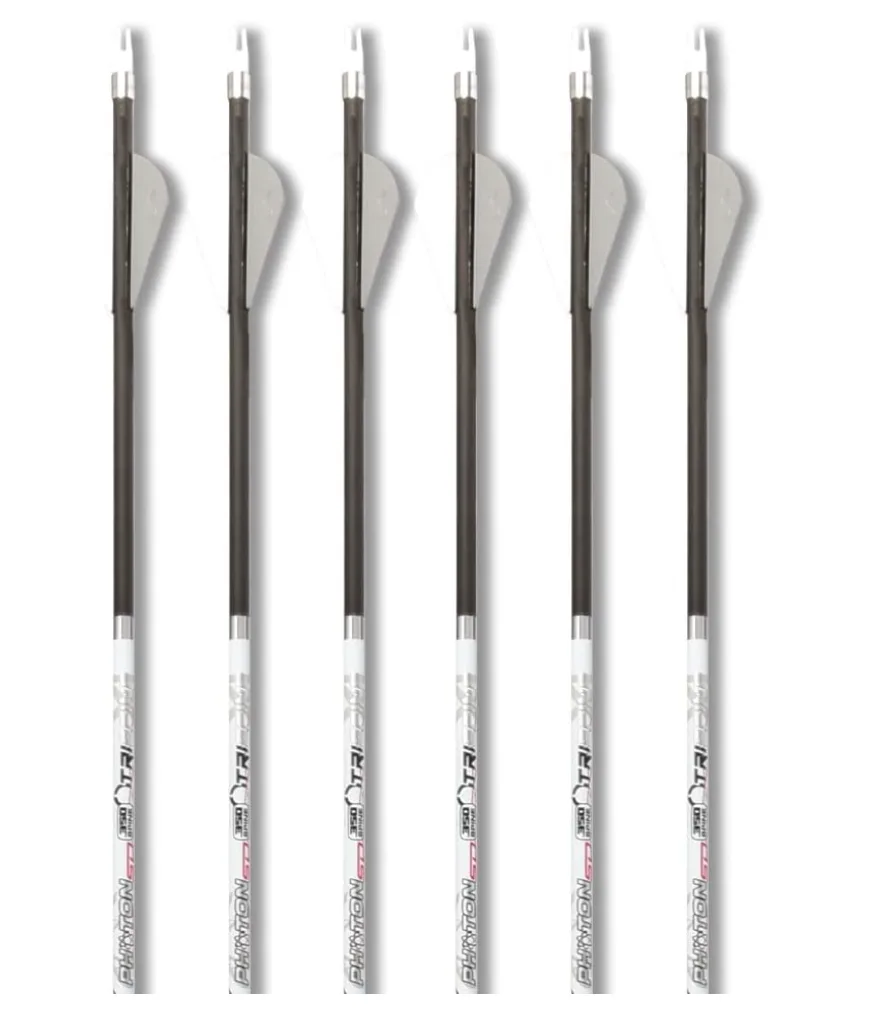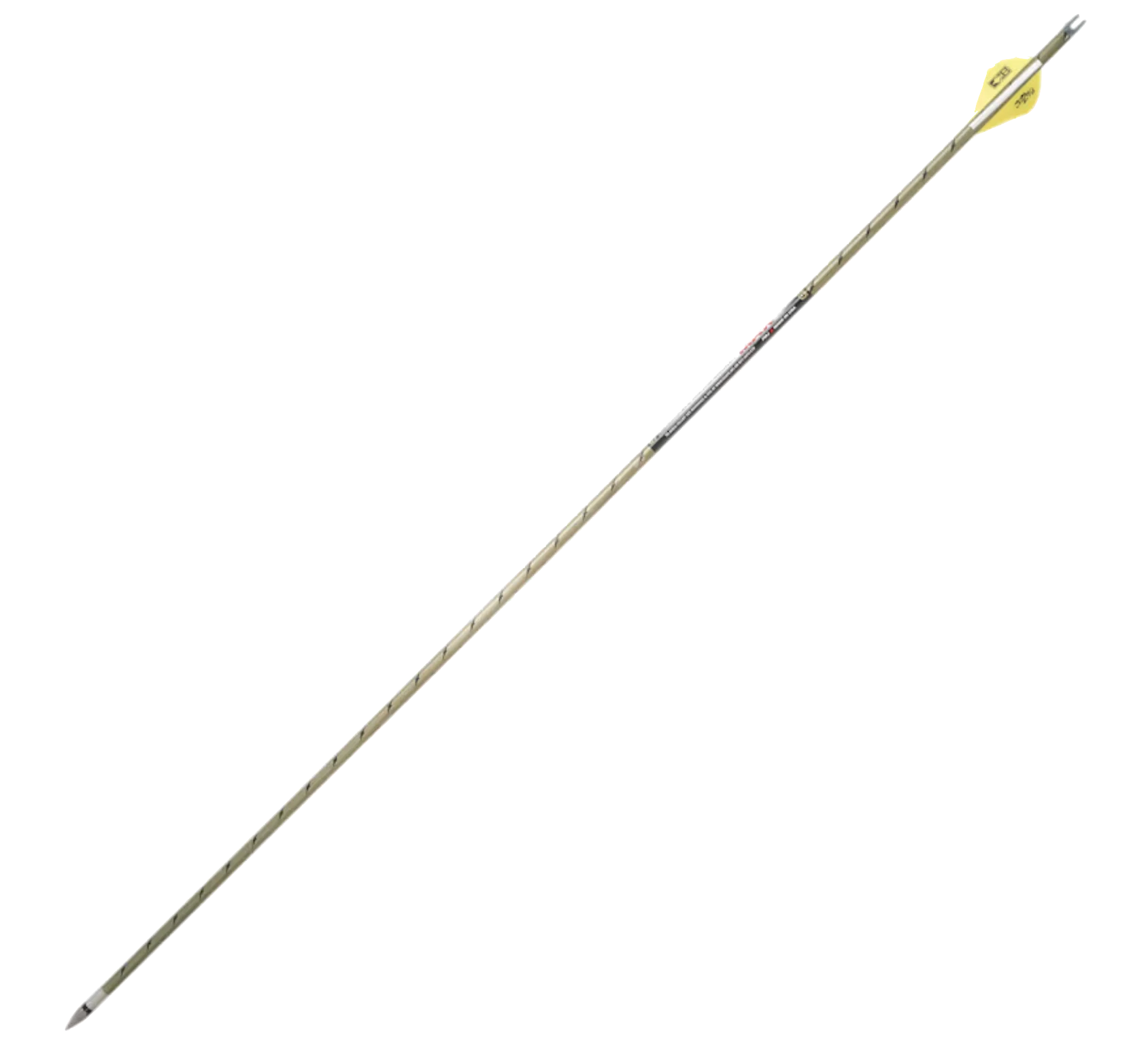We may earn revenue from the products available on this page and participate in affiliate programs. Learn more ›
Hunting arrows are overlooked. Everyone obsesses over compound bows and accessories, but rarely do they put the same thought or analysis into arrow selection. This is a big mistake. Your arrow is the only piece of gear that actually leaves your bow and interacts with what you're aiming at. If you don’t match the arrow’s spine (stiffness) to your bow’s poundage, you will struggle with accuracy. That's why it's important to pick the best arrow for your bow.
In the world of bowhunting, 2025 was the year of new arrows. Specifically, small-diameter shafts with customizable components that allow hunters to take the same arrow and make it light, medium, or heavy. The more a bowhunter can customize their arrow to match their hunting/shooting situation, the better. This explosion of new arrows meant we needed to make some calls and hit the range. We reached out to several arrow manufacturers and asked them to send us their new products. We ended up testing and customizing seven of the best arrows on the market. Here's how they performed at the range and in the field.
Best Overall: Easton 4mm X10 Parallel Pro
Best Budget: Gold Tip AirStrike
Hardest Hitting: Iron Will RIP TKO Elite V1
Fastest: Easton 5.0
Quietest: UltraView UV 1K
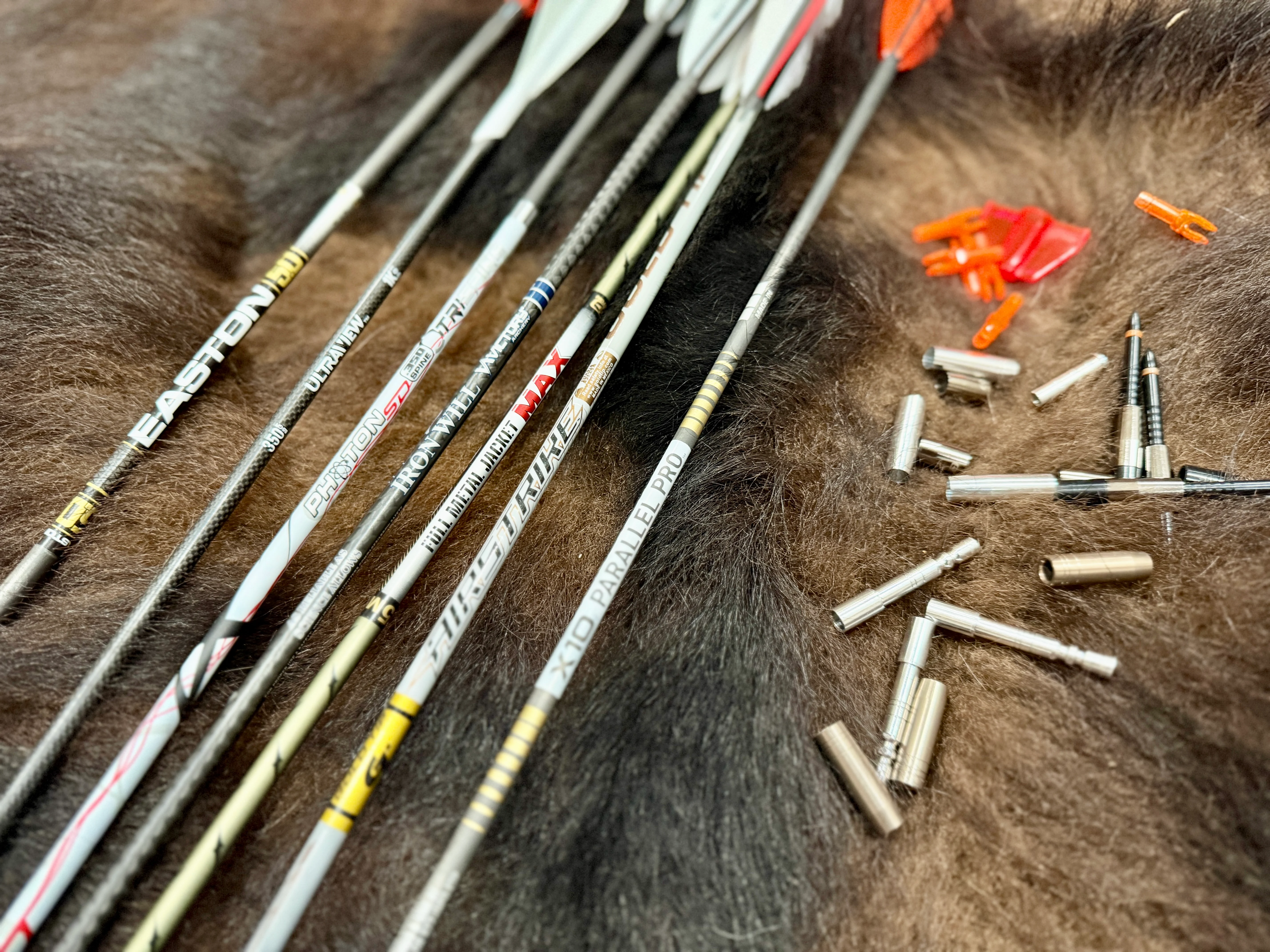
Best Overall: Easton 4mm X10 Parallel Pro
Specs
Spine Sizes: 250, 300, 340, 380
Straightness: +/- .001"
Diameter: 4mm micro-diameter
Materials: Aluminum/carbon (AC) shaft construction
Pros
Extremely accurate
Reduced wind drift
Maximum penetration
Custom build
Cons
Expensive
Easton took its popular competition arrow—one that has dominated the podium since its inception in 1996—and crafted a hunting arrow based on the original X10 specifications. For starters, the aluminum core wrapped in carbon makes the arrows more durable, and the dull black finish doesn't create a game-spooking shine. The 4mm shaft with a 4mm Microlite nock cuts through the wind to ensure accuracy, regardless of the broadhead threaded into the half-out inset.
I'm a medium-weight (tweener) arrow fan. My X10 Parallel Pros weigh 437.7 grains, and my build features the 55-grain aluminum/aluminum half-outs (sold separately). Easton offers many other half-out options. The arrow build is easy, and after fletching my arrows with four Flex-Fletch 2.5 Pro vanes set at a helical between 2 and 2.5 degrees, the arrows produced a three-shot speed average of 300 fps from Mathews' Lift X 29.5 set at 70 pounds of draw weight and a draw length of 29 inches. The combo produced a kinetic energy rating of 86.29 foot-pounds. I've blown through 60-plus-yard elk using this arrow.
Due to its weight and low-profile vanes, the arrow flies quietly and performs remarkably well in the wind. My 60-yard test group, in 12 to 15 mph winds, put three QAD Exodus three-blade broadhead-tipped shafts less than 1 inch from my field point group. The arrows are expensive, and you must purchase aftermarket accessories, which drives up the price point. However, if you're looking for the very best arrow available, the X10 Parallel Pro is it.
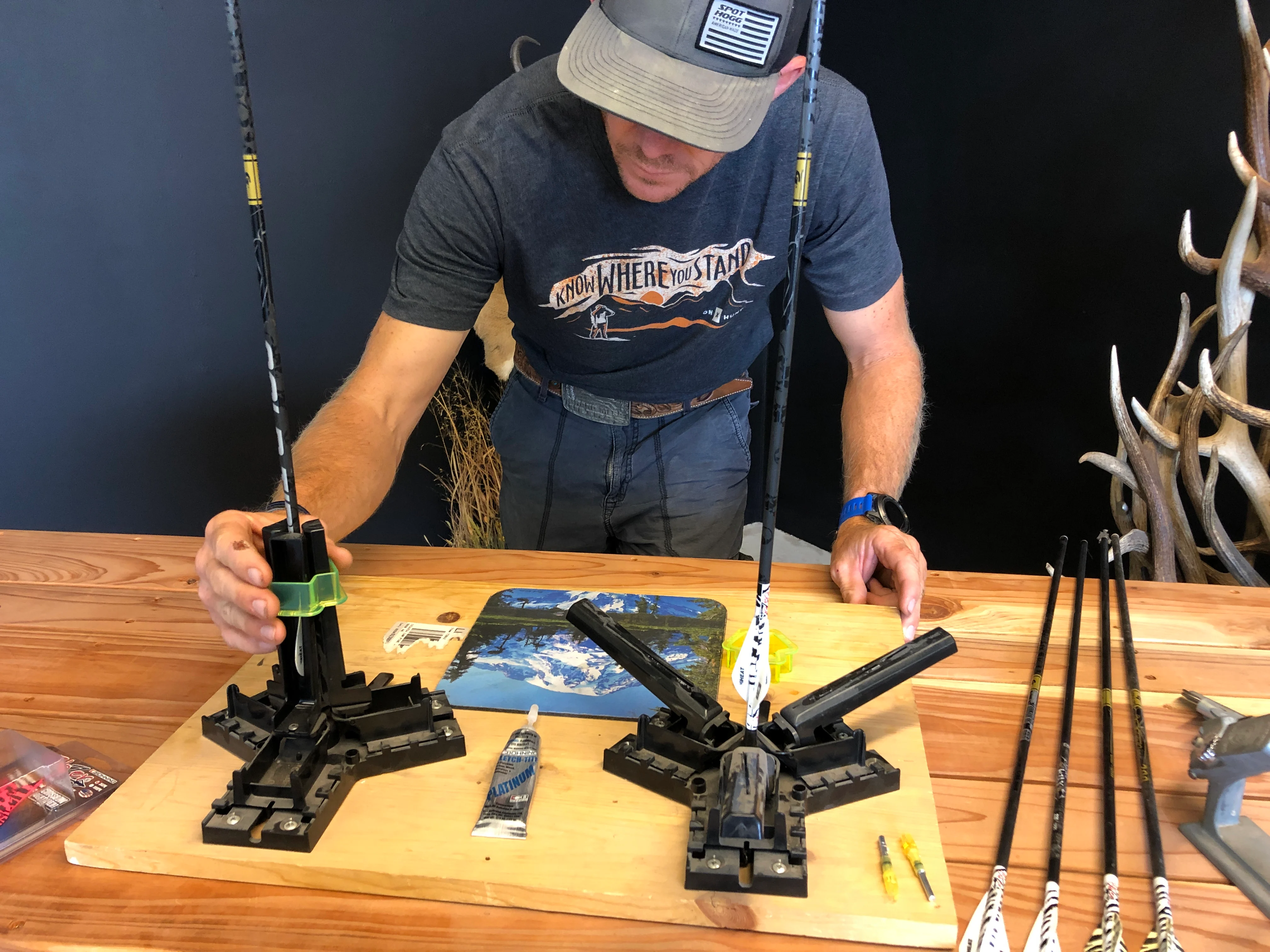
Best Budget: Gold Tip AirStrike
Specs
Spin Sizes: 250, 300, 340, 400 spine sizes
Straightness: +/- .001"
Diameter: .204" inside diameter
Materials: Dyna-Tek Slick Shield coating
Pros
Accurate
Durable
Pull easily from targets
Four fletch from the factory
Cons
Shiny
The most you're going to pay for a dozen fletched and ready-to-go Gold Tip AirStrike arrows is $229.99. For reference, you can spend more than that for a half dozen models on this list. More impressive than the price is the all-around performance of this arrow. From whitetail and turkeys to elk and moose, the AirStrike is a customizable arrow that flies true, produces excellent speed, and delivers a powerful impact.
I hate the gray coating. It's shiny and unnecessary. However, I love that Gold Tip offers these arrows in a four-fletch option. A four-fletch arrow stabilizes fixed-blade broadheads without having to add too much speed-robbing helical, and beyond 80 yards, four-fletched arrows group better, though only slightly, than three-fletch arrows. The low-profile vanes help the arrows fly with stealth, and with a finished grain weight of 404.4 grains, the AirStrikes flew at 306 feet per second. A 400-plus-grain arrow that flies at 300-plus feet per second and is quiet and small enough in diameter to reduce wind drift and boost penetration should raise the eyebrow of every bowhunter. These arrows are highly accurate and deliver field point, mechanical, and fixed-blade broadheads with superior accuracy.
Gold Tip lets you customize your AirStrike order on their website. They have several spine and vane offerings, but stay away from the 2" Rapt-X Vanes. They are stiff, tall, and loud. The arrows come with nock collars and insert collars to boost arrow protection and arrow FOC. You can go with just the slight outsert if you want to save a few grains, but I don't recommend it.
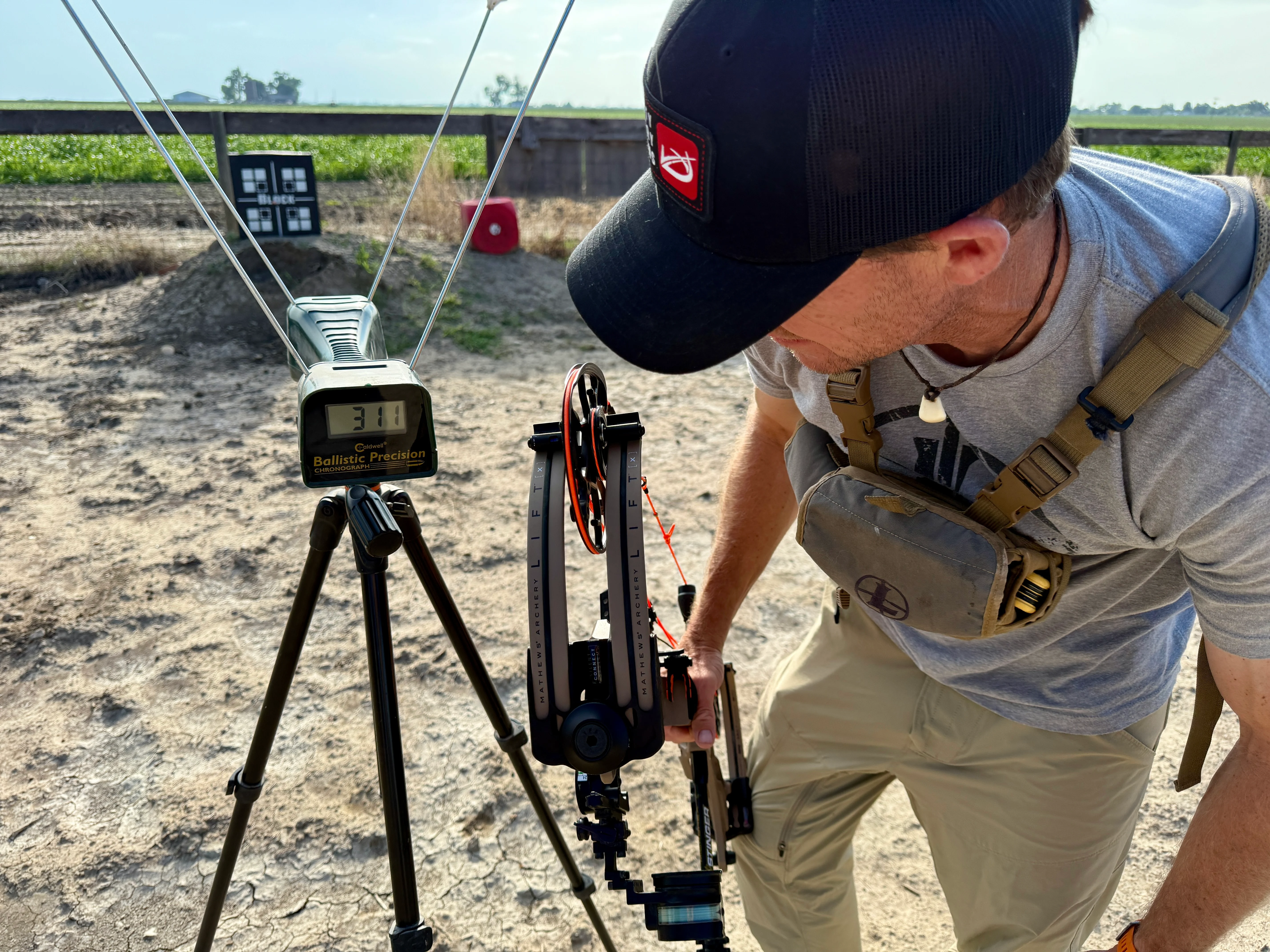
Hardest Hitting: Iron Will RIP TKO Elite V1
Specs
Spine Size: 250, 300, 350
Straightness: +/- .001
Diameter: .204" inside diameter
2.5-degree right helical vane orientation
Pros
Build them how you like them
Come fully assembled from the factory
Hard-hitting
Accurate
Cons
Too expensive
Make no mistake, Iron Will worked directly with Victory Archery to create this Iron Will-branded arrow. That's not a knock. Iron Will partners with arrow-building veterans (they also have Easton-branded arrows) and adds their own 2.5 vanes, impact collars, and field points. And the RIP TKO Elite V1 arrows are excellent.
My Iron Wills arrived cut to my specifications, fletched with three low-profile Iron Will 2.5 vanes, AAE IP nocks, HIT inserts glued in, and impact collars over the arrow's front end. I paid the extra $25 for Iron Will's Flight Optimized field points. To the tested distance of 60 yards, they hit right with my much cheaper Saunders 100-grain field points.
The .204" inside diameter arrows feature Victory's 3K Carbon Weave for enhanced durability, and the ICE nano-ceramic coating increases downrange penetration on big-game animals and allows for easy one-handed arrow removal from foam targets. The three 2.5-degree right helical vanes stabilize broadheads—fixed and mechanical—as well as field points. These were the second-most accurate arrows in this field test. They flew quietly thanks to the longer, lower-profile vanes and featured a finished arrow weight of 445.6 grains. The arrows were the heaviest in the field test, yet they produced a respectable three-shot fps average of 297 and hit with 87.3-foot-pounds of kinetic energy. That's with a 350-spine arrow. I'd take this shaft to Africa, tip it with an Iron Will Single-Bevel, and run it right through a cape buffalo.
The problem with these arrows is the price. Six of my arrows, built with the components I selected, cost $249.95 before shipping. That's too much money. And, like many arrows in this test, Iron Will offers numerous components and various options.
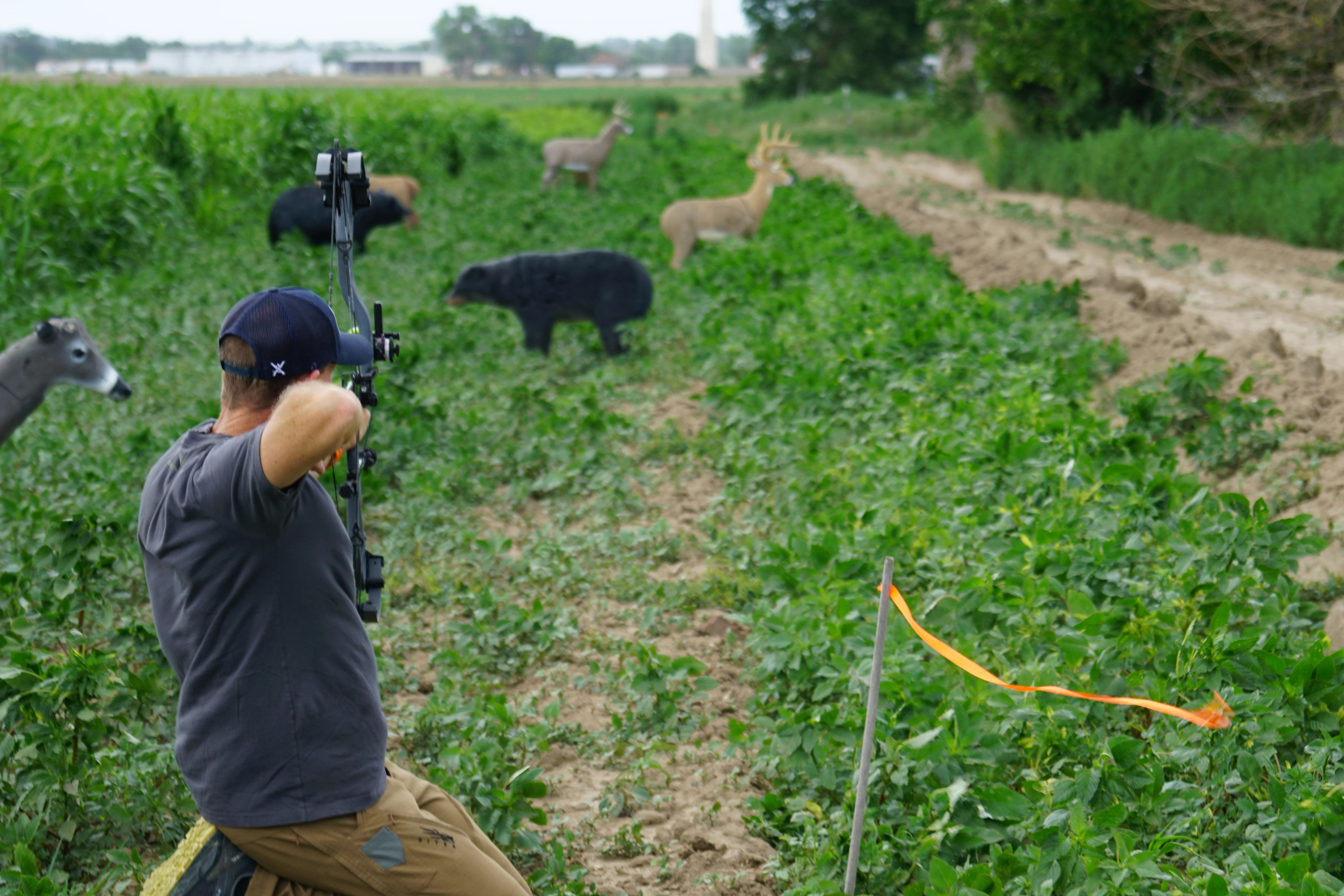
Fastest: Easton 5.0
Specs
Spin Sizes: 200, 250, 300, 340, 400, 500
Straightness: +/-.001"
Diameter: 5mm
Improved 5mm Microlite nock
Pros
Fast
Efficient
Customizable
Priced right
Cons
You can make one up if you want
Easton's newest speed arrow, the 5.0, features a lightweight and durable carbon shaft with a 5mm diameter. The goal with the 5.0 was to provide several components that allow bowhunters to make either an ultra-light or a medium-weight arrow that will handle most North American big-game species.
I created a pair of Easton 5.0 arrows. One weighed 361.1 grains, and the other 381.1 grains. For the test, I opted to leave the HIT collar covering the arrow's front end and stay with the 16-grain HIT insert. It's well under the 350 minimum GPI rating for the pair of 70-pound compound bows I tested it with, and I've blown through elk—several of them—with a 370-grain arrow.
At 311 fps and one shot that pushed the chronograph to 314 fps, the 5.0 was the fastest arrow tested and still produced a kinetic energy rating of 80.30 foot-pounds. This will be one of my hunting arrows this fall. I get speed and energy, and though the lighter-weight 5.0 does fly a bit louder and doesn't reduce side-to-side wind drift as well as many of the arrows in this test, it does fill me with shooting confidence. My 60-yard three-arrow broadhead group was 3 inches right from my three-arrow field tip group in a 12-15 mph left-to-right wind.
Easton sent their Match Grade 5.0s fletched with three AAE Hybrid Vanes set at a right helical between 2 and 2.5 degrees. The shaft is dull and not flashy, which I love. I don't care how arrows look; I care how they perform. The 5.0s are offered in six popular spine sizes with 5mm Microlite nocks, which Easton notes have an improved throat design for better string fit and increased tunability.
Quietest: UltraView UV 1K
Specs
Spine Size: 250, 300, 350
Straightness: +/- .001"
Diameter: 4.5mm
1K Carbon Weave build
Pros
Very quiet
Accurate
Durable
Excellent vanes
Cons
Expensive
Too much focus on aesthetics
UltraView is proud of its new UV 1K arrows; too proud. They are excellent arrows, but UltraView wasted too much money on aesthetics. I'm confident the black case the arrows arrive in costs more than a standard MTM arrow case. UltraView offers a payment plan. These are arrows, not automobiles.
Enough negative. The arrows are built extremely well, fly with superb accuracy, hit hard, and were the quietest arrows in the test. Using a downrange high-definition microphone, the UV 1Ks, weighing 444 grains and flying at 285 feet per second, were extremely stealthy. These arrows will work for any game animal in North America.
The longer vanes with shorter profiles look great and stabilize fixed-blade heads. The hybrid 4.5mm diameter build makes these arrows slim, but I don't believe it boosts overall accuracy to an extent worth shelling out this many greenbacks. The white-crested end is also a nice feature, making these arrows easy to find. I'm not a fan of the black nock. Why give the arrows an all-white crest and three white vanes and add a black nock? I like the metal pin bushing, which protects the nock's throat and adds back-end arrow weight. The insert system appears solid.
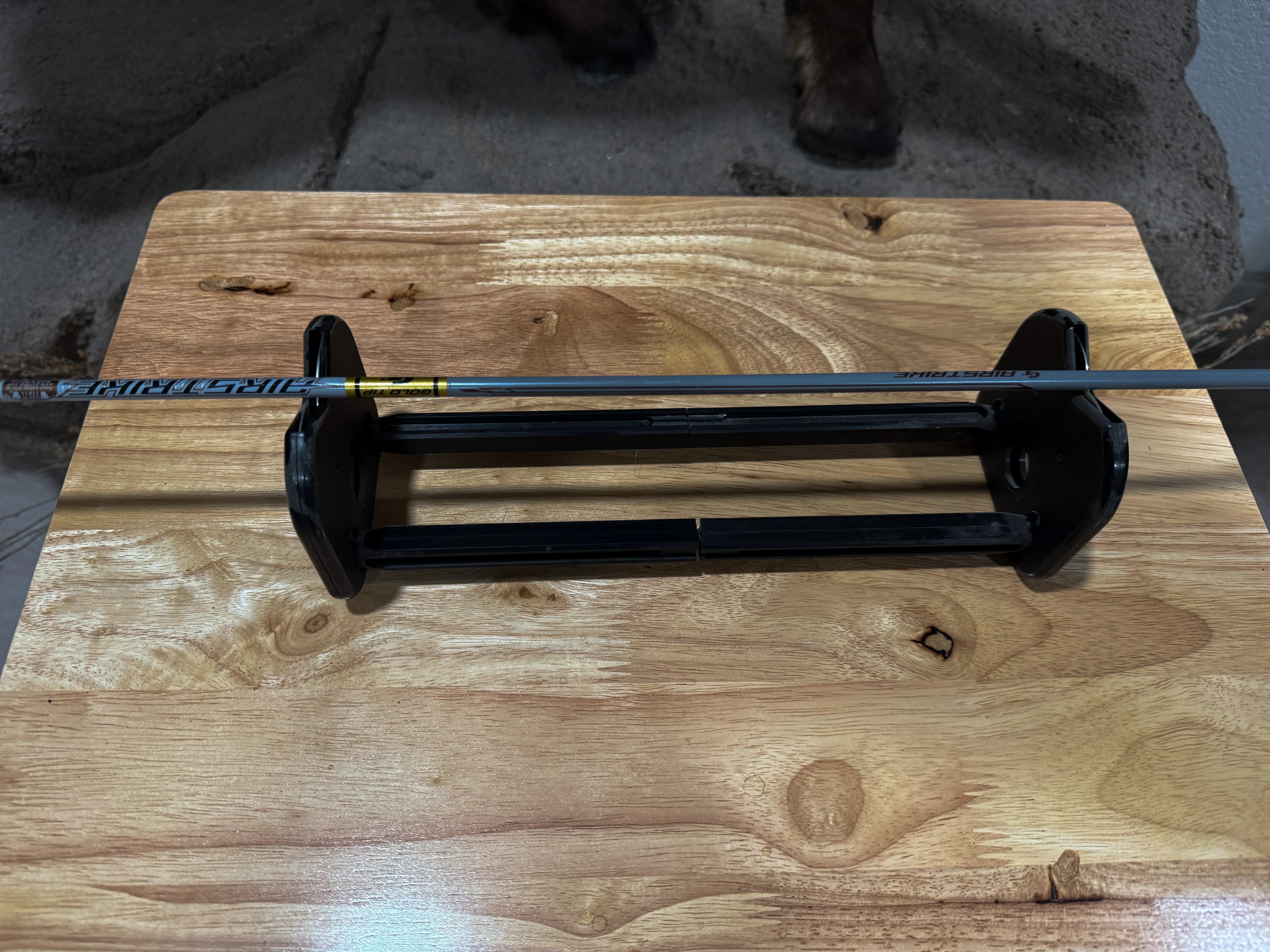
Carbon Express Maxima Photon SD
Specs
Spine Sizes: 300, 350, 400
Straightness: +/- .002"
Diameter: .203" inside diameter
BullDog Nock Collars
Pros
Fast
Hard-hitting
Durable
Show blood
Priced Right
Cons
Loud in flight
Carbon Express makes excellent arrows. I've killed many animals with CX-branded shafts. Although my all-time favorite was the Maxima BLU, the Arrow builder's Photon SDs are a close second. An insert collar slides over the half-out insert for increased FOC and front-arrow stability. The back of the arrow wears A BullDog nock collar, a CX staple. The arrow's build is solid and straightforward. While I don't love the all-white center, it does grab the eye and will help with blood detection and shot location. The white nock is easy to see, and though I'm not a fan of the 2" Quadel Raptor X vanes, they do the job via the slight right offset if you stay away from fixed-blade broadheads.
The vanes are loud and don't stabilize fixed-blade broadheads well. Fixed-blade accuracy was descent, up to 40 yards, but my groups started to widen beyond that distance. This is due to the slight, almost straight, offset of the factory-fletched vanes. The .203" inside diameter 350 spine arrows weren't great in the wind, but weren't terrible either. I blame this more on the tall, stiff vanes than I do on the arrow. The arrows are priced right, and if you order bare shafts and fletch those arrows with a low-profile medium-stiff vane, they will make an excellent whitetail arrow. The second-fastest arrow in the bunch, at 310 fps, the Photon SDs achieve a KE rating of 85.04 foot-pounds, earning them the bronze in the hard-hit category.
Easton FMJ MAX
Specs
Spine Sizes: 200, 250, 300, 340, 400
Straightness: +/- .001 Match Grade
Diameter: 5mm diameter
Acu-Carbon core
Pros
Super quiet
Hard-hitting
Accurate
Included components with Match Grade
Cons
No 4mm option
Easton's original FMJ—both the 4mm and 5mm—are tested and true shafts. Bowhunters love them. They are straight, quiet, tough, and hit extremely hard. For 2025, Easton added the MAX to its FMJ line, aiming to give FMJ lovers a straight, quiet, tough, and hard-hitting arrow that provides increased speed. The Easton MAX with 5mm Microlite nocks, pre-fletched (three-fletch) AAE Hyrid right-helical vanes in a 340 spine are 1.5 grains per inch lighter than the 4mm FMJ.
My 28-14/16" FMJ Max arrows had a finished weight of 421.1 grains and flew downrange at 304 feet per second. A great medium-weight arrow that can be customized with Easton components, the FMJ Max achieves a kinetic energy rating of 86.43 pounds, the second-highest KE rating in our test. It was also the second quietest arrow behind UltraViews UV 1K. The fit and finish are great. I love the olive drab with original FMJ black Easton stars. Stay away from the 2" Blazer vane options. Blazer vanes are tall, stiff, and so loud.
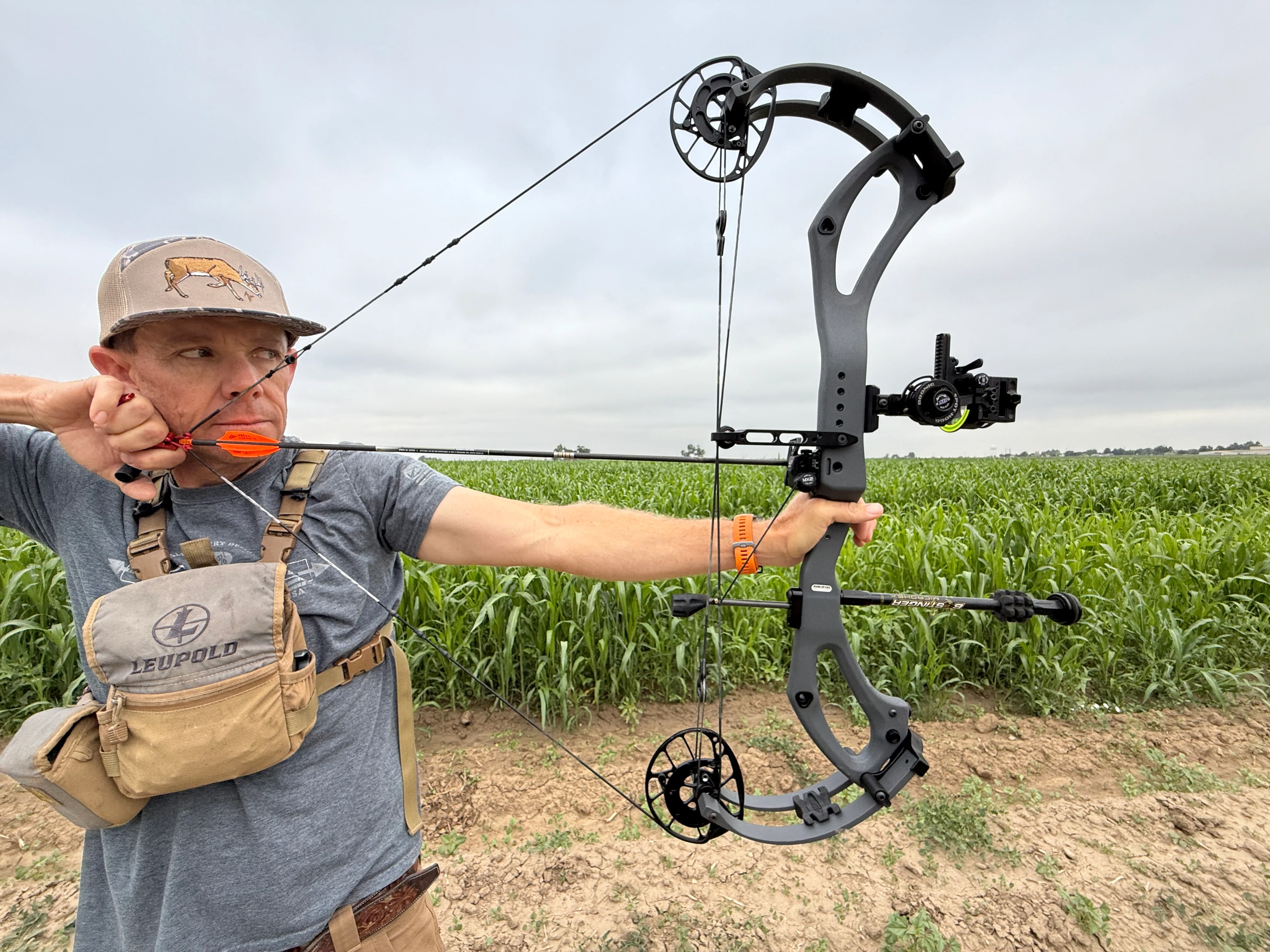
What to Consider When Choosing Hunting Arrows
Though they appear simple, arrow shafts have a number of important nuances that require your consideration. Take the following into account every time you purchase a set of arrows.
Spine
When it comes to arrow selection, the first thing you need to do is match the arrow’s spine to your bow’s poundage. The task isn’t difficult. Most arrow manufacturers have charts on their website to guide you, and you can always ask a pro shop professional.
In layman’s terms, the spine is the stiffness of the arrow. If you’re pulling a 70-pound bow and shooting a 500-spine arrow, the arrow’s build is too thin and too light to handle the energy transferred into it. Not only is this dangerous (the arrow can explode), but your precision will suffer greatly. The arrow will never stabilize in flight, and you might as well be throwing darts blindfolded.
It’s also possible to be over-spined. If you’re shooting a bow with a 40-pound draw-weight and an arrow branded with a 250-spine rating, you’ll experience slow flight speed, inconsistent accuracy, reduced kinetic energy downrange, and extreme arrow drop. Remember, the larger the number, the less stiff the spine.
Weight
It’s also important to understand that spine size is not overall arrow weight. For instance, if you’re shooting a 400-spine arrow, that doesn’t mean your total arrow weight is 400 grains. Total arrow weight is measured in grains per inch, commonly abbreviated as GPI. The stiffer the spine, the more grains per inch the arrow will weigh, but grains per inch and spine are different.
The relationship between speed and weight is ultra-important. If you’re shooting an arrow that’s too heavy for your bow’s poundage, your arrow will seem like it’s moving in slow motion as it travels toward the target. On the flip side, if you’re shooting an arrow that’s flirting with the minimum GPI rating for the poundage you’re pulling, you’ll get remarkable speed, but your arrow will never fully stabilize in flight.
Diameter
For years, there were standard diameter arrows and nothing else. Today, many manufacturers craft shafts in different diameters. Take Easton, for instance. This legendary arrow builder is well-known for its 6.5, 6, 5, and 4mm lines.
Why is this important? First, if the spine and weight are matched correctly with your bow, thinner-diameter arrows will penetrate better. The shaft’s slimmer build tracks perfectly behind the broadhead’s wound channel and dives deeper into game. In addition, arrows with a smaller diameter tend to fly better in the wind, especially at distances beyond 50 yards. The reason for this is simple: Reduced surface area gives the wind less area to press against.
What are you hunting?
Next, think about what you hunt. A pile of arrow designs will work as well in the elk mountains as they do in the whitetail hardwoods, but many boast features that make them a species-specific standout. For instance, some shafts sport boosted F.O.C. (Front of Center) features to increase accuracy and penetration, which is important when hunting tough, thick-skinned critters.
To simplify things, ask yourself what you plan to use your arrow of choice for. If the answer is spring turkey and close-range whitetails out of a tree stand or ground blind, you can get away with an economical arrow with few bells and whistles. If you’re a western bowhunter, or are infatuated with the long-range practice game, I can promise you get what you pay for. Top-end micro-diameter arrows with more weight in the arrow’s front half reduce side-to-side drift caused by crosswinds. And the pencil-thin diameter penetrates deep.
FAQs
Q: What is arrow spine and why should it matter?
Spine reflects the stiffness or flexibility of an arrow. Spine is measured by how much an arrow bends under a specific draw weight. Spine size must align with draw weight, and manufacturers provide charts to help. If you're overspined—an archer pulling 60 pounds shooting a 250-spine arrow—speed is lost, and because the arrows are too stiff, accuracy will wane. On the flip side, if an archer pulling 70 pounds shoots a 500-spine arrow, the arrow will flex too much. It will never recover in flight and produce terrible accuracy, that is, if the energy transfer from the bow doesn't blow it to carbon bits.
Q: What are grains per inch, and why do they matter?
Grains per inch is how much each inch of the arrow weighs. Grains per inch (GPI) is important, and manufacturers do a good job of posting it; often, they brand their arrows with their GPI rating. Arrows built for speed generally have a lower GPI, while arrows built to be heavy and tough have a higher GPI. I pull 70 pounds and like a medium-weight arrow—somewhere between 390 and 440 grains. Arrows in this range typically have a GPI between 8.0 and 8.9 GPI.
Q: Are heavier arrows better for hunting?
In my opinion, heavy is always better. I flirt with speed only when chasing spot-and-stalk pronghorn and mule deer. By flirt, I mean I don’t get crazy. I may drop down to an arrow with the same spine that weighs a tad less per inch. Those who shoot 65- and 70-pound draw weights should shoot arrows around 400 grains and go heavier if long-range shots aren’t likely.
Why Trust Us
For more than 125 years, Field & Stream has been providing readers with honest and authentic coverage of outdoor gear. Our writers and editors eat, sleep, and breathe the outdoors, and that passion comes through in our product reviews. You can count on F&S to keep you up to date on the best new gear. And when we write about a product—whether it’s a bass lure or a backpack—we cover the good and the bad, so you know exactly what to expect before you decide to make a purchase.

